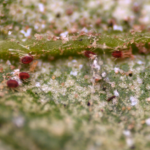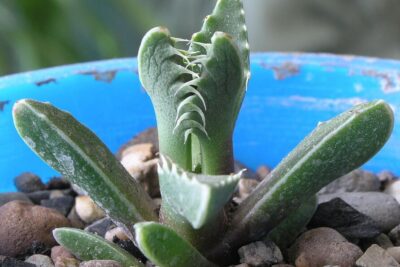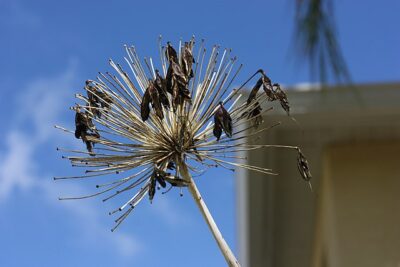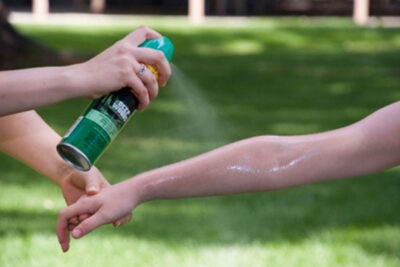
Understanding Leaf Loss in Succulents: Causes and Solutions

Succulents are a popular type of plant known for their ability to store water in their leaves, stems, and roots. They have gained immense popularity in recent years due to their low maintenance and unique appearance. However, one common issue that succulent owners face is leaf loss. Understanding the causes of leaf loss in succulents is crucial in order to provide proper care and prevent further damage to these plants.
We will explore the various reasons why succulents may experience leaf loss. We will discuss both natural causes, such as seasonal changes and dormancy periods, as well as common problems like overwatering, underwatering, and pests. Additionally, we will provide practical solutions and tips to help you maintain healthy succulents and minimize leaf loss. By the end of this article, you will have a better understanding of how to care for your succulents and ensure their long-term health and vitality.
- Provide adequate sunlight to prevent leaf loss in succulents
- Avoid overwatering, as it can cause root rot and lead to leaf loss in succulents
- Ensure proper drainage in the pot or container to prevent excess moisture and leaf loss
- Provide adequate sunlight to promote healthy growth and prevent leaf loss
- Use well-draining soil specifically designed for succulents to prevent leaf loss
- Maintain proper temperature and humidity levels to prevent leaf loss in succulents
- Avoid sudden temperature changes, as it can cause stress and lead to leaf loss in succulents
- Protect succulents from pests and diseases, which can cause leaf loss
- Avoid excessive handling or touching of succulents, as it can cause leaf loss
- Provide adequate nutrients through proper fertilization to prevent leaf loss in succulents
- Regularly inspect and prune succulents to remove dead or dying leaves and prevent leaf loss
- Frequently Asked Questions
Provide adequate sunlight to prevent leaf loss in succulents
One of the main causes of leaf loss in succulents is inadequate sunlight. Succulents are known for their ability to thrive in sunny and dry conditions, so it is crucial to provide them with enough sunlight to prevent leaf loss.
Succulents typically require at least 6 hours of direct sunlight each day. Without sufficient sunlight, succulents may start to stretch out, causing their leaves to become weak and eventually fall off. This stretching phenomenon is known as etiolation.
To ensure that your succulents receive adequate sunlight, place them in a bright location near a window that receives plenty of sunlight. If you notice that your succulents are not getting enough light, consider using artificial grow lights to supplement their sunlight requirements.
Remember to rotate your succulents regularly to ensure even exposure to sunlight. This will help prevent one side of the plant from becoming elongated and weak due to uneven light distribution.
Protect succulents from extreme temperatures
In addition to sunlight, extreme temperatures can also contribute to leaf loss in succulents. Succulents are adapted to survive in hot and arid climates, but they are not immune to the effects of extreme heat or cold.
 Is My Succulent Infested with Pests? Signs of White Web Infection
Is My Succulent Infested with Pests? Signs of White Web InfectionDuring hot summer months, succulents can become stressed and lose leaves if they are exposed to excessive heat for prolonged periods. To protect your succulents from extreme heat, consider providing them with some shade during the hottest parts of the day or moving them to a cooler location.
On the other hand, succulents can also suffer from leaf loss when exposed to freezing temperatures. Frost damage can cause the leaves to become discolored or mushy, leading to their eventual loss. If you live in an area with cold winters, it is advisable to bring your succulents indoors or provide them with protection, such as frost cloth or a greenhouse.
Avoid overwatering to prevent leaf loss
Overwatering is a common mistake that succulent enthusiasts often make, leading to leaf loss and root rot. Succulents have adapted to survive in arid conditions by storing water in their leaves and stems, making them highly susceptible to root rot if their watering needs are not met.
When succulents are overwatered, their roots become saturated, leading to poor oxygen circulation and root rot. As a result, the leaves may turn yellow or translucent and eventually fall off.
It is essential to establish a watering routine that allows the soil to dry out completely between waterings. Test the soil moisture level by inserting your finger about an inch into the soil; if it feels dry, it's time to water your succulent. Remember that succulents prefer being underwatered rather than overwatered, so it's better to err on the side of caution.
Additionally, make sure to use well-draining soil specifically formulated for succulents. This type of soil allows excess water to drain away quickly, preventing water from pooling around the roots.
Providing adequate sunlight, protecting succulents from extreme temperatures, and avoiding overwatering are essential factors in preventing leaf loss in succulents. By understanding these causes and implementing the appropriate solutions, you can ensure that your succulents thrive and maintain their beautiful foliage.
 Causes of Red Tips on Succulent Plants: A Comprehensive Guide
Causes of Red Tips on Succulent Plants: A Comprehensive GuideAvoid overwatering, as it can cause root rot and lead to leaf loss in succulents
One of the most common causes of leaf loss in succulents is overwatering. While it's true that succulents are known for their ability to store water in their leaves, this doesn't mean they can tolerate excessive moisture. In fact, overwatering can quickly lead to root rot, a condition where the roots become damaged and cannot effectively absorb water and nutrients.
To avoid overwatering your succulents, it's important to understand their watering needs. Unlike most other houseplants, succulents prefer to be watered infrequently but thoroughly. As a general rule of thumb, it's best to wait until the soil is completely dry before watering your succulents again. This may mean watering them only once every 1-2 weeks, or even less frequently during the dormant winter months.
To ensure proper drainage and prevent waterlogged soil, it's crucial to plant your succulents in a well-draining potting mix. A mix specifically formulated for cacti and succulents, or a combination of regular potting soil and perlite or sand, can help promote adequate drainage. Additionally, make sure that the pot you choose has drainage holes at the bottom to allow excess water to escape.
When watering your succulents, it's important to water the soil directly and avoid getting water on the leaves. Excessive moisture on the leaves can create a humid environment, which is conducive to the growth of fungal diseases. Instead, aim to water the soil until it is evenly moist, allowing the excess water to flow out through the drainage holes.
Key Takeaways:
- Overwatering is a common cause of leaf loss in succulents.
- Succulents prefer infrequent but thorough watering.
- Use a well-draining potting mix and ensure the pot has drainage holes.
- Water the soil directly and avoid getting water on the leaves.
By understanding the causes and solutions for leaf loss in succulents, you can ensure that your plants thrive and maintain their beautiful foliage. Remember, when it comes to watering succulents, less is often more!
 Understanding and Treating the White Substance on Succulents
Understanding and Treating the White Substance on SucculentsEnsure proper drainage in the pot or container to prevent excess moisture and leaf loss
One of the most common causes of leaf loss in succulents is excess moisture. Succulents are adapted to thrive in arid environments and have evolved to store water in their leaves, stems, and roots. However, when they are exposed to too much water or have poor drainage in their pots or containers, their roots become waterlogged, leading to root rot and leaf loss.
To prevent excess moisture and leaf loss, it is crucial to ensure proper drainage in the pot or container where your succulent is planted. This can be achieved by using a well-draining potting mix that allows water to flow freely through the soil and out of the drainage holes in the bottom of the pot.
Additionally, consider using a pot with drainage holes to allow excess water to escape. Avoid using pots without drainage holes or pots with saucers that collect water, as this can lead to water pooling at the bottom, causing the roots to stay wet for extended periods.
Remember, when it comes to succulents, it is better to underwater than overwater. Allow the soil to dry out completely before watering again, and always check the moisture level of the soil before watering to avoid excessive moisture accumulation.
Provide adequate sunlight to promote healthy growth and prevent leaf loss
Continue writing the content only for that heading:
Use well-draining soil specifically designed for succulents to prevent leaf loss
One of the main causes of leaf loss in succulents is overwatering. These plants have adapted to arid conditions and are equipped with specialized tissues that store water. However, when exposed to excessive moisture, their roots can become waterlogged, leading to root rot and ultimately causing the leaves to fall off.
 Causes of Blue Discoloration in Succulent Leaves
Causes of Blue Discoloration in Succulent LeavesTo avoid this issue, it is crucial to use well-draining soil specifically formulated for succulents. This type of soil allows excess water to pass through quickly, preventing water accumulation around the roots. Look for soil mixes that contain ingredients like perlite, pumice, or sand, which help create air pockets and improve drainage.
When selecting a pot for your succulents, opt for containers with drainage holes at the bottom. These holes allow any excess water to escape, further reducing the risk of overwatering and leaf loss.
Remember, succulents thrive in dry conditions, so it's important to water them sparingly. Allow the soil to dry out completely between waterings to ensure the roots have a chance to breathe and avoid becoming waterlogged.
Tips:
- Water your succulents only when the top inch of soil is dry.
- Ensure water drains completely through the pot after watering, and remove any excess water from the saucer or tray.
- Consider using a moisture meter to accurately gauge the moisture levels in the soil.
- Observe your succulents closely for signs of overwatering, such as mushy leaves, yellowing, or a foul odor.
By providing your succulents with well-draining soil and practicing proper watering techniques, you can significantly reduce the risk of leaf loss and help your plants thrive.
Maintain proper temperature and humidity levels to prevent leaf loss in succulents
Succulents are known for their unique ability to store water in their leaves, stems, and roots. However, even these hardy plants can experience leaf loss if not provided with the right environmental conditions. Temperature and humidity play a crucial role in the health and well-being of succulents, and maintaining proper levels is essential to prevent leaf loss.
 Eliminating White Webs on Succulents: A Comprehensive Guide
Eliminating White Webs on Succulents: A Comprehensive GuideTemperature
Most succulents thrive in warm temperatures ranging from 70°F to 85°F (21°C to 29°C). While they can tolerate some fluctuations, extreme temperature changes can cause stress and lead to leaf loss. It is important to avoid sudden drops in temperature, especially during winter or when moving your succulents indoors. Providing a stable and consistent temperature will help your succulents retain their leaves and remain healthy.
Humidity
Succulents are adapted to arid and dry climates, which means they prefer low humidity levels. High humidity can create a moist environment that encourages fungal growth and rot, leading to leaf loss. Aim for a humidity level between 30% and 50% to keep your succulents happy. If you live in a humid region, consider using a dehumidifier or placing your plants near a fan to improve air circulation and reduce humidity levels.
Proper watering
Overwatering is one of the most common causes of leaf loss in succulents. These plants have adapted to survive in drought-like conditions and have specialized water storage tissues. It's important to allow the soil to dry out completely between waterings to prevent root rot and leaf drop. When watering, make sure to thoroughly drench the soil and let excess water drain away. Avoid leaving your succulents sitting in standing water, as this can also lead to leaf loss.
Proper lighting
Succulents require bright light to thrive, but excessive exposure to direct sunlight can cause sunburn and leaf damage. Place your succulents in a location where they receive bright, indirect light for several hours a day. If you notice your succulents losing leaves or becoming stretched out, it may be a sign that they are not receiving enough light. Consider providing supplemental lighting using grow lights to ensure proper growth and leaf retention.
By maintaining proper temperature, humidity, watering, and lighting conditions, you can minimize leaf loss in your succulents and help them thrive. Remember to observe your plants closely and make adjustments as necessary to provide the ideal environment for your succulents' growth and well-being.
Avoid sudden temperature changes, as it can cause stress and lead to leaf loss in succulents
One of the common causes of leaf loss in succulents is sudden temperature changes. These plants are known for their ability to tolerate extreme conditions, but they still require some stability in their environment to thrive.
 White-Dotted Succulents: Potential Poisonous Effects on Pets
White-Dotted Succulents: Potential Poisonous Effects on PetsWhen succulents are exposed to rapid temperature fluctuations, such as going from a warm indoor setting to a cold outdoor environment, it can cause stress to the plants. This stress can lead to leaf loss as the succulents try to adapt to the new conditions.
To prevent leaf loss due to sudden temperature changes, it's important to acclimate your succulents gradually. If you plan to move them from indoors to outdoors or vice versa, make sure to do it slowly over a period of a few days or even weeks. This allows the plants to adjust to the new temperature gradually, reducing the risk of stress and leaf loss.
Here are some tips to help you avoid sudden temperature changes:
- Monitor weather forecasts and plan your movements accordingly
- Bring your succulents indoors during extreme weather conditions
- Place your succulents in a location that provides some protection from direct sunlight and drafts
- Consider using a greenhouse or a sheltered area to provide a more controlled environment for your succulents
By taking these precautions, you can minimize the chances of your succulents experiencing stress and leaf loss due to sudden temperature changes. Remember, a stable and suitable environment is crucial for the health and vitality of your succulents.
Protect succulents from pests and diseases, which can cause leaf loss
1. Identify common pests and diseases that affect succulents
Succulents are known for their resilience, but they can still fall victim to various pests and diseases that can cause leaf loss. Some common pests that affect succulents include aphids, mealybugs, spider mites, and scale insects. These pests feed on the sap of the succulent, weakening it and causing the leaves to wither and fall off.
In addition to pests, succulents can also be susceptible to diseases such as root rot, powdery mildew, and fungal infections. These diseases can cause the leaves to become discolored, develop spots, or even decay, leading to leaf loss.
 Identifying and Treating Root Rot in Succulents: Signs and Options
Identifying and Treating Root Rot in Succulents: Signs and Options2. Take preventive measures to protect your succulents
Prevention is key when it comes to protecting your succulents from pests and diseases. Here are some measures you can take:
- Inspect regularly: Regularly inspect your succulents for any signs of pests or diseases. Look for unusual spots, discoloration, or wilting leaves.
- Isolate infected plants: If you notice any signs of pests or diseases, isolate the affected plants to prevent the spread. This will also help you treat the problem more effectively.
- Improve air circulation: Ensure that your succulents have proper air circulation, as this can help prevent the development of fungal diseases such as powdery mildew.
- Avoid overwatering: Overwatering can lead to root rot, which can cause leaf loss. Make sure to water your succulents sparingly and allow the soil to dry out between waterings.
3. Use organic pest control methods
If you notice pests on your succulents, it's important to address the issue promptly. Instead of reaching for chemical pesticides, consider using organic pest control methods:
- Natural predators: Introduce natural predators such as ladybugs or lacewings to your garden. These beneficial insects feed on pests and help keep their populations in check.
- Neem oil: Neem oil is an effective organic pesticide that can be used to control pests on succulents. Dilute it according to the instructions and spray it on the affected plants.
- Soap and water solution: A simple solution of mild soap and water can be sprayed on succulents to eliminate pests like aphids and mealybugs. Be sure to rinse the plants after a few hours.
By taking these preventive measures and using organic pest control methods, you can protect your succulents from pests and diseases, ultimately reducing the risk of leaf loss.
Avoid excessive handling or touching of succulents, as it can cause leaf loss
When it comes to succulents, one of the common issues that many plant enthusiasts face is leaf loss. It can be disheartening to see your succulent losing its lush green leaves, but understanding the causes and finding suitable solutions can help you prevent further damage and promote healthy growth.
Causes of Leaf Loss in Succulents:
There are several factors that can contribute to leaf loss in succulents. It's essential to identify the underlying cause to address the issue effectively. Here are some common causes:
- Overwatering: Succulents are adapted to arid conditions and have specialized water storage tissues. Overwatering can lead to root rot, causing the leaves to turn mushy and eventually fall off.
- Underwatering: On the other hand, underwatering can also cause leaf loss. When succulents don't receive enough water, they prioritize their survival by shedding leaves.
- Improper Lighting: Succulents thrive in bright, indirect sunlight. Insufficient light or sudden changes in lighting conditions can cause stress to the plant, leading to leaf loss.
- Pests and Diseases: Infestations by pests like mealybugs, aphids, or diseases like fungal infections can weaken the plant, causing leaves to wither and drop.
- Physical Damage: Excessive handling, touching, or accidental bumping can cause the delicate leaves of succulents to break or fall off.
Solutions to Prevent Leaf Loss:
Now that we have identified the causes, here are some solutions to prevent leaf loss in your succulents:
 How to Save a Moldy Succulent: Removing Mold and Restoring Health
How to Save a Moldy Succulent: Removing Mold and Restoring Health- Watering: Ensure you water your succulents appropriately. Allow the soil to dry out completely between waterings, and avoid overwatering or underwatering.
- Lighting: Place your succulents in a location where they can receive bright, indirect sunlight for at least six hours a day. Consider using grow lights if natural light is insufficient.
- Pest Control: Regularly inspect your succulents for signs of pests or diseases. Treat infestations promptly using appropriate organic or chemical methods.
- Handle with Care: Avoid excessive handling or touching of succulents, as it can cause leaf damage. Be cautious while moving or rearranging your plants.
By following these solutions, you can create an optimal environment for your succulents, minimizing leaf loss and ensuring their overall health and vitality.
Provide adequate nutrients through proper fertilization to prevent leaf loss in succulents
Leaf loss in succulents can be a concerning issue for many plant enthusiasts. However, by understanding the causes and implementing effective solutions, you can help prevent and mitigate this problem. One of the key factors to consider is providing adequate nutrients to your succulents through proper fertilization.
When it comes to fertilizing succulents, it's important to remember that they have different nutritional needs compared to other plants. Succulents are adapted to survive in arid environments with poor soil conditions, so they don't require excessive amounts of nutrients. Over-fertilization can actually lead to leaf loss and other health issues in succulents.
To ensure your succulents receive the right amount of nutrients, opt for a balanced, slow-release fertilizer specifically formulated for succulents. These fertilizers typically have a lower nitrogen content, which helps prevent excessive leaf growth and potential leaf loss. It's best to follow the manufacturer's instructions and apply the fertilizer sparingly, usually once or twice a year.
Another crucial aspect of fertilization is timing. Succulents tend to be dormant during the winter months, so it's advisable to avoid fertilizing them during this period. Fertilizing during dormancy can disrupt their natural growth cycle and potentially lead to leaf loss. Instead, focus on providing nutrients during the active growing season, which is typically spring and summer for most succulents.
In addition to using a balanced fertilizer, supplementing your succulents with organic matter can also help improve their overall nutrient intake. Mixing organic compost or well-rotted manure into the soil can provide slow-release nutrients and enhance the soil's fertility. This can promote healthier growth and reduce the likelihood of leaf loss in succulents.
 Reviving a Succulent with Root Rot: Best Methods for Recovery
Reviving a Succulent with Root Rot: Best Methods for RecoveryRemember, moderation is key when it comes to fertilizing succulents. Over-fertilization can be just as detrimental as under-fertilization. Always observe your plants closely and adjust your fertilization routine accordingly. With the right nutrients and proper care, you can keep your succulents thriving and minimize leaf loss.
Regularly inspect and prune succulents to remove dead or dying leaves and prevent leaf loss
Succulents are known for their thick, fleshy leaves that store water, making them low-maintenance plants. However, they can still experience leaf loss, which may indicate underlying issues. By regularly inspecting and pruning your succulents, you can remove dead or dying leaves and promote healthy growth.
Causes of Leaf Loss in Succulents
There are several factors that can contribute to leaf loss in succulents. Understanding these causes can help you identify and address the issue:
- Overwatering: One of the most common causes of leaf loss in succulents is overwatering. These plants are adapted to arid environments and prefer dry conditions. Overwatering can lead to root rot and cause the leaves to turn mushy and fall off.
- Underwatering: On the other hand, underwatering can also cause leaf loss in succulents. When deprived of water, the plants may shed their lower leaves to conserve moisture for survival.
- Poor drainage: Succulents require well-draining soil to prevent waterlogged roots. If the soil doesn't drain properly, the roots can suffocate and rot, leading to leaf loss.
- Inadequate sunlight: Succulents thrive in bright sunlight. Insufficient light can weaken the plants, causing them to drop leaves in an attempt to conserve energy.
- Pests and diseases: Certain pests, such as mealybugs and aphids, can infest succulents and damage their leaves. Additionally, fungal or bacterial infections can cause leaf rot and subsequent loss.
Solutions for Preventing Leaf Loss
To prevent leaf loss in your succulents, consider implementing the following solutions:
- Proper watering: Water your succulents sparingly, allowing the soil to dry out completely between waterings. Avoid overwatering or underwatering to maintain healthy leaves.
- Ensure good drainage: Use well-draining soil and pots with drainage holes to prevent water from accumulating around the roots. This will help prevent root rot and subsequent leaf loss.
- Provide adequate sunlight: Place your succulents in a location where they can receive at least six hours of bright, indirect sunlight per day. Consider rotating them periodically to ensure even growth.
- Monitor and treat pests: Regularly inspect your succulents for signs of pests or diseases. If infestations occur, promptly treat them with appropriate organic or chemical solutions to prevent leaf damage.
- Avoid over-fertilization: While succulents benefit from occasional fertilization, excessive use of fertilizers can lead to leaf loss. Follow the recommended dosage and frequency for your specific succulent species.
By understanding the causes of leaf loss in succulents and implementing these preventive measures, you can ensure the long-term health and beauty of your succulent collection.
Frequently Asked Questions
1. Why do succulents lose their leaves?
Succulents can lose their leaves due to overwatering, underwatering, poor light conditions, or pests and diseases.
 Succulent Care: Treating Brown Spots and Disease
Succulent Care: Treating Brown Spots and Disease2. How can I prevent leaf loss in my succulents?
To prevent leaf loss, make sure you provide proper watering by allowing the soil to dry out between waterings, place your succulent in a well-lit area, and regularly inspect for pests and diseases.
3. Can leaf loss be a sign of a larger problem with my succulent?
Yes, leaf loss can be a sign of underlying issues such as root rot, nutrient deficiencies, or improper care. It's important to identify and address the root cause to prevent further damage.
4. What should I do if my succulent is losing a lot of leaves?
If your succulent is experiencing excessive leaf loss, assess its growing conditions, adjust watering habits, check for pests or diseases, and consider repotting if necessary. If the problem persists, consult a plant specialist for further guidance.
If you want to read more articles similar to Understanding Leaf Loss in Succulents: Causes and Solutions, you can visit the Pests and Diseases category.






You Must Read